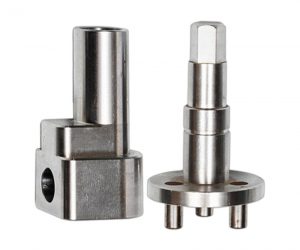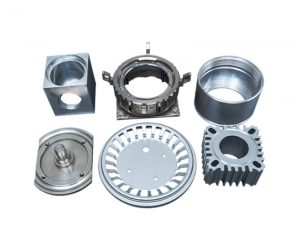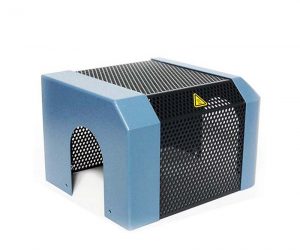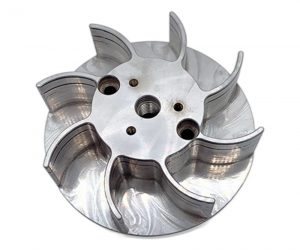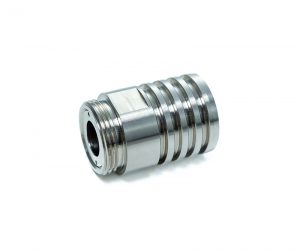Defining Giants in Plastic Moulding
In the vast and dynamic realm of plastic moulding, the term "giants" refers to companies that have established themselves as industry leaders through a combination of scale, technological prowess, and market dominance. These companies are not only at the forefront of production but also drive innovation and set trends that shape the entire sector.
Comparison of Giants
Production Capabilities
When it comes to production capabilities, different plastic moulding giants have their own strengths in various plastic moulding processes. Here is a comparison Yigu Technology table of some leading companies in injection moulding, blow moulding, and extrusion moulding in terms of production capacity and production efficiency:
| Company Name | Injection Moulding - Annual Production Capacity (Units) | Injection Moulding - Production Efficiency (Parts per Hour) | Blow Moulding - Annual Production Capacity (Units) | Blow Moulding - Production Efficiency (Parts per Hour) | Extrusion Moulding - Annual Production Capacity (Tons) | Extrusion Moulding - Production Efficiency (Tons per Hour) |
| Company A | 50,000,000 | 8,000 | 10,000,000 | 1,500 | 200,000 | 20 |
| Company B | 40,000,000 | 7,000 | 8,000,000 | 1,200 | 180,000 | 18 |
| Company C | 60,000,000 | 9,000 | 12,000,000 | 1,800 | 220,000 | 22 |
As shown in the table, Company C has the highest annual production capacity and production efficiency in injection moulding, which may be due to its large - scale investment in high - speed injection moulding machines and advanced production lines. In blow moulding, Company C also leads in both production capacity and efficiency. This could be attributed to its optimized mould design and high - performance blow - moulding equipment. For extrusion moulding, Company C once again shows an edge, perhaps because of its continuous improvement in extrusion processes and the use of energy - efficient extrusion equipment.
Product Quality and Innovation
Product quality and innovation are crucial aspects that set plastic moulding giants apart. In terms of product quality, these companies often obtain various quality certifications. For example, Company A has obtained ISO 9001:2015 certification, which ensures that its quality management system meets international standards. It also has specific certifications for different product applications, such as ISO 13485 for medical - grade plastic products, which is essential for supplying to the medical industry.
Innovation is another area where these giants compete. Company B has been very active in introducing innovative products. In the past five years, it has launched over 20 new product lines. One of its notable innovations is a new type of lightweight and high - strength plastic material for automotive components. This material not only reduces the weight of car parts but also improves their durability, which has attracted the attention of major automotive manufacturers.
Company C has a strong focus on research and development, with an R&D budget accounting for 8% of its annual revenue. This high investment has led to the development of several patented technologies, such as a unique mould - cooling system in injection moulding that can significantly reduce the cooling time of plastic parts, thus increasing production efficiency without sacrificing product quality.
Cost - Efficiency
Cost - efficiency is a key factor in the competitiveness of plastic moulding companies. Looking at raw material procurement, some giants have established long - term partnerships with major plastic resin suppliers. For Yigu Technology instance, Company A has a strategic alliance with a leading petrochemical company. Through this partnership, it can secure a stable supply of high - quality raw materials at a relatively lower price, often enjoying a 10% discount compared to the market price.
In terms of production costs, automation plays a significant role. Company B has highly automated production lines in its injection - moulding plants. By reducing the need for manual labour, it has managed to cut down labour costs by 30% over the past few years. Additionally, it has optimized its production processes to minimize waste. Through better mould design and process control, it has reduced material waste by 15%, which directly contributes to cost savings.
Company C focuses on operational cost control. It has implemented a lean management system across all its manufacturing plants. This system has led to a 20% reduction in inventory - holding costs by streamlining the supply chain and improving inventory turnover. Moreover, through energy - saving measures, such as installing energy - efficient lighting and upgrading to more energy - efficient machinery, it has reduced its energy consumption by 18%, resulting in lower utility bills. Overall, these cost - control measures give each company a different cost - efficiency advantage in the market.
Conclusion
Recap of Key Points
Yigu Technology In the plastic moulding industry, giants are characterized by their large - scale operations, high - tech capabilities, and extensive market reach. Their production capacity is massive, with some producing hundreds of thousands of tons of plastic products annually and operating hundreds of high - speed injection moulding machines. These companies invest significantly in R&D, adopting advanced technologies like 3D printing for mould prototyping, high - level automation, and simulation software. Their wide market share, often spanning multiple continents and serving diverse industries such as automotive, electronics, and consumer goods, sets them apart from smaller competitors.
When comparing giants, differences in production capabilities, product quality, innovation, and cost - efficiency become evident. In production, some may lead in injection moulding capacity, while others excel in blow moulding or extrusion moulding. Product quality is often backed by international certifications, and innovation is driven by high R&D budgets, resulting in new product lines and patented technologies. Cost - efficiency is achieved through strategies like long - term raw material partnerships, automation, and lean management systems.
FAQ
- Q: How do plastic moulding giants maintain their high - volume production?
A: They maintain high - volume production through multiple large - scale manufacturing plants equipped with a large number of high - speed injection moulding machines and a substantial workforce. They also invest in advanced technologies like automation to increase production efficiency.
- Q: What are the main challenges for plastic moulding giants in terms of product innovation?
A: Main challenges include developing new products that meet the evolving demands of different industries, such as the high - precision requirements of electronics and the safety standards of medical and food - related products. Additionally, creating sustainable and environmentally friendly plastic products is a significant challenge.
- Q: How can plastic moulding giants improve their cost - efficiency?
A: They can improve cost - efficiency by establishing long - term partnerships with raw material suppliers for better pricing, implementing automation to reduce labour costs, minimizing waste through optimized production processes, and adopting lean management systems to streamline operations and reduce inventory - holding costs.
